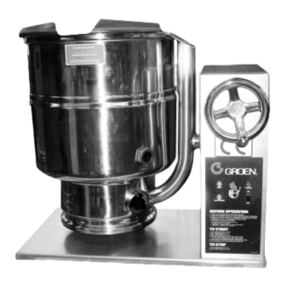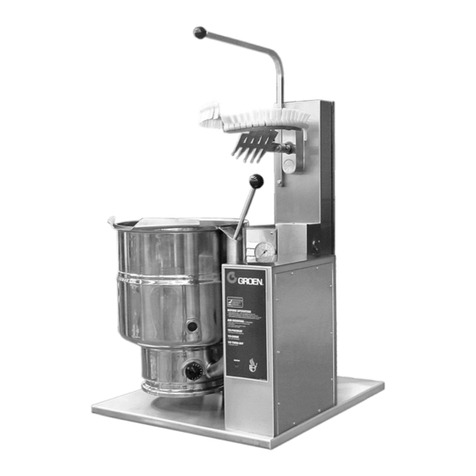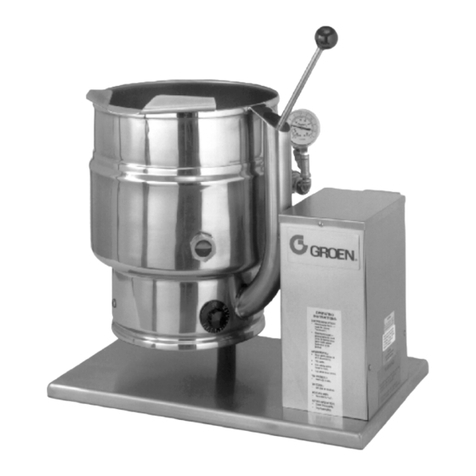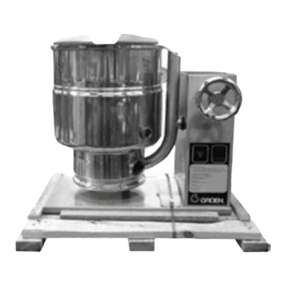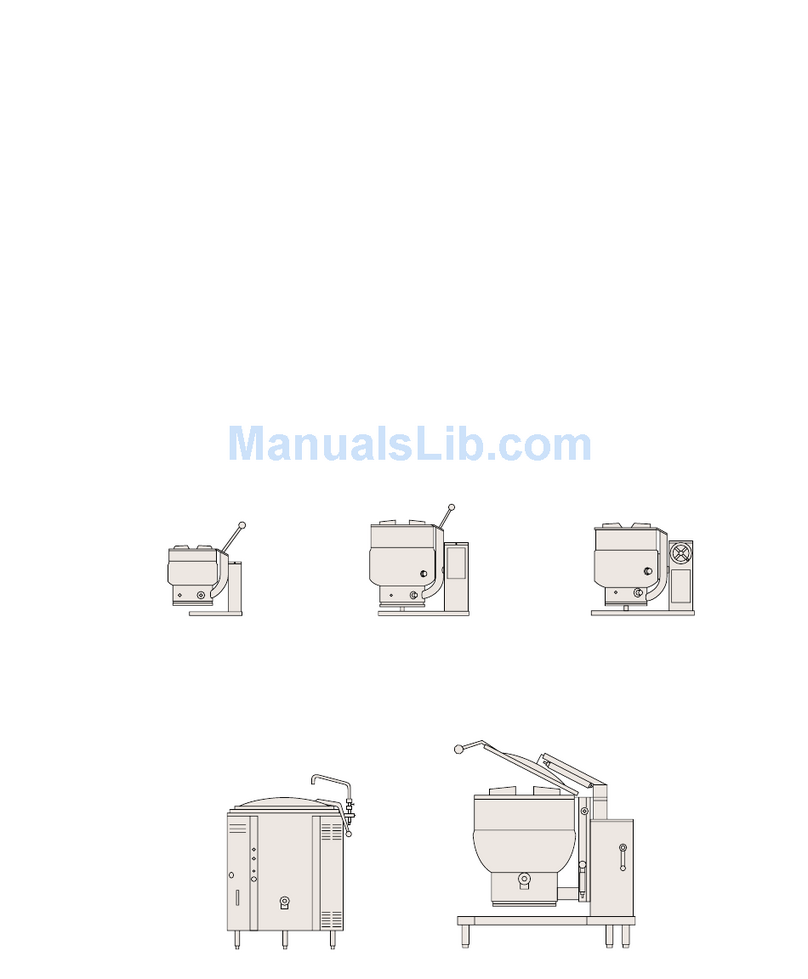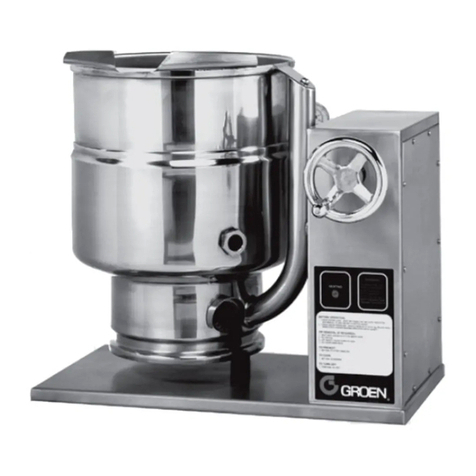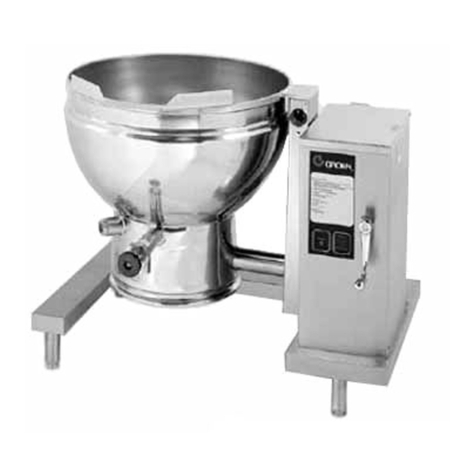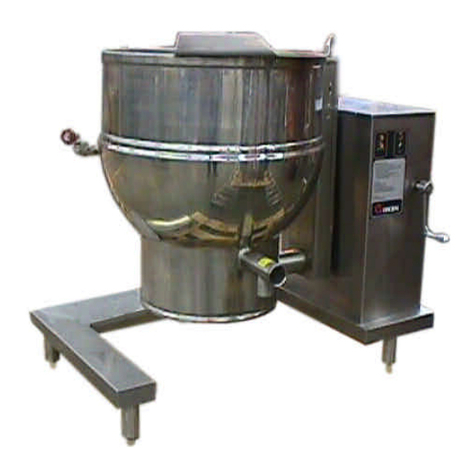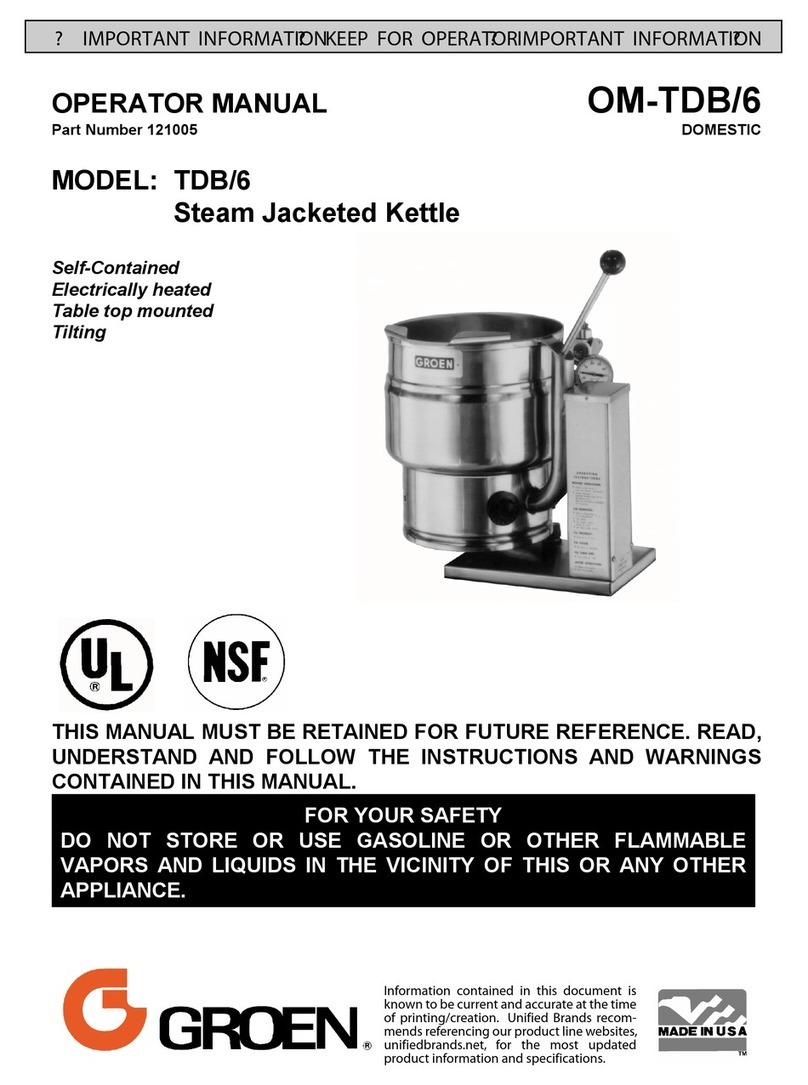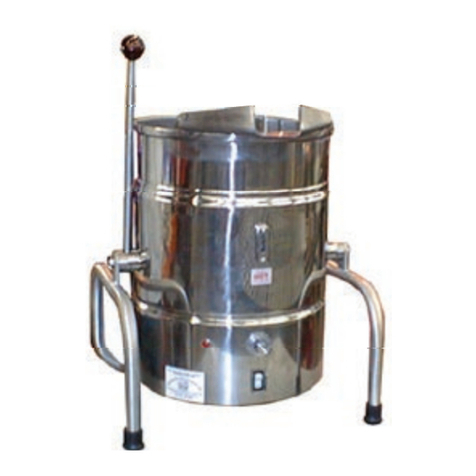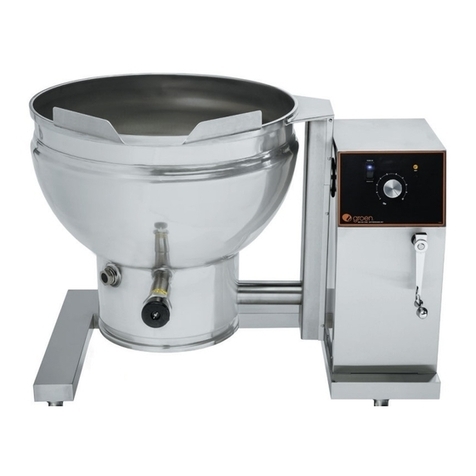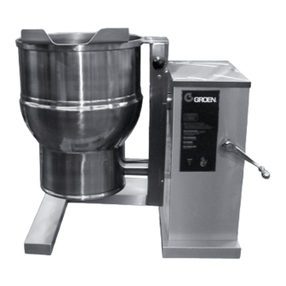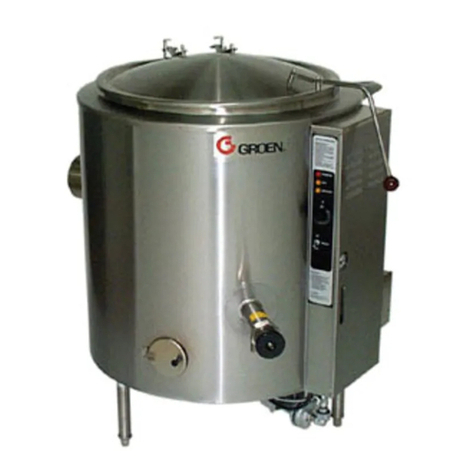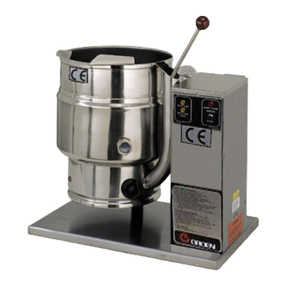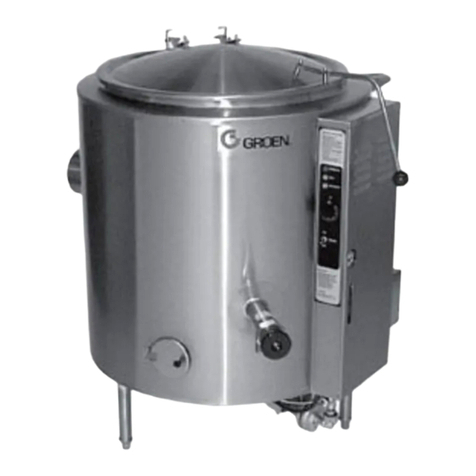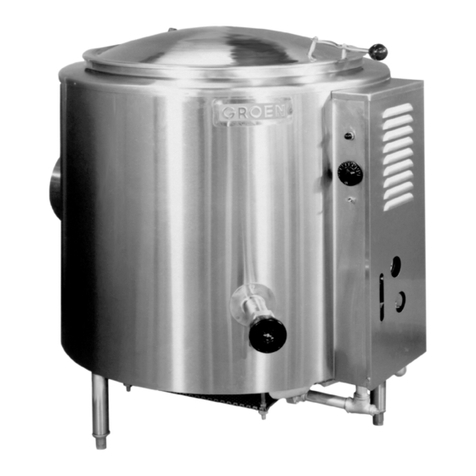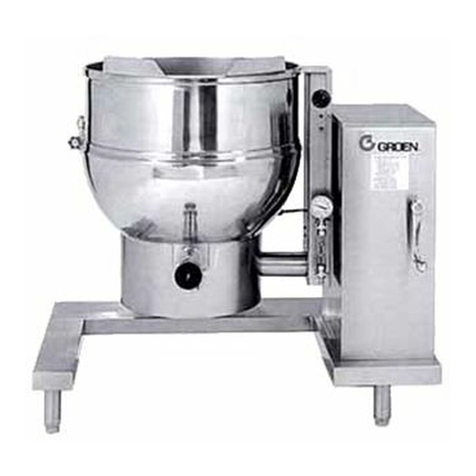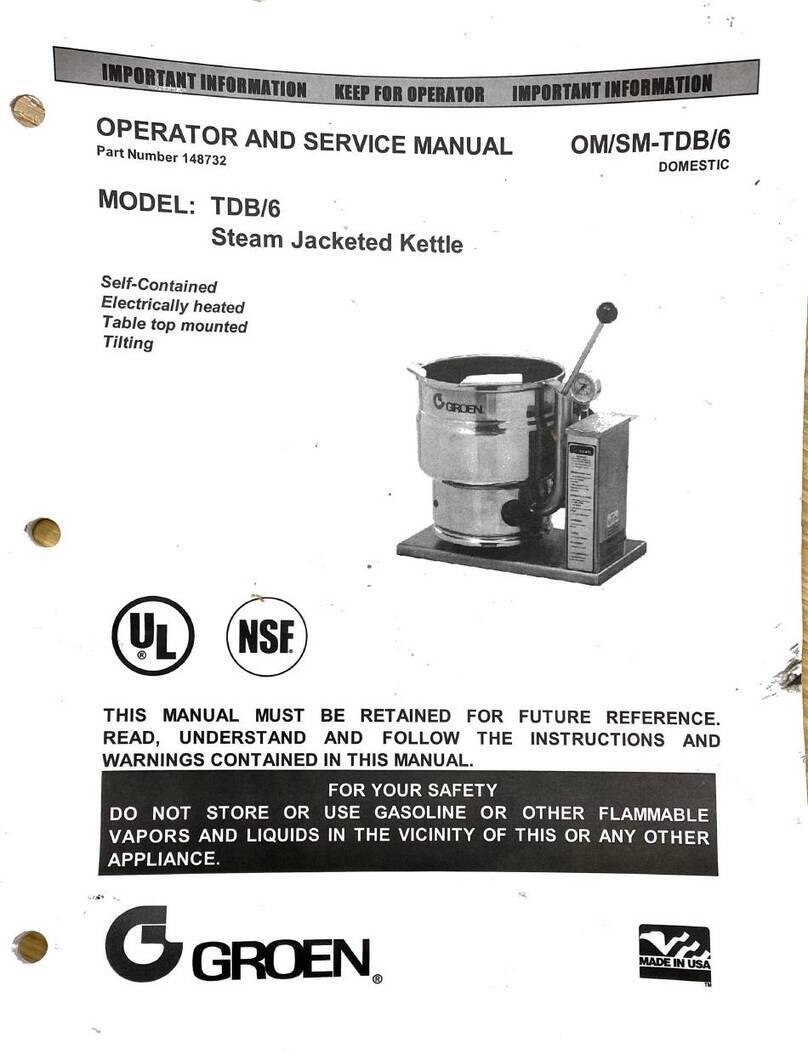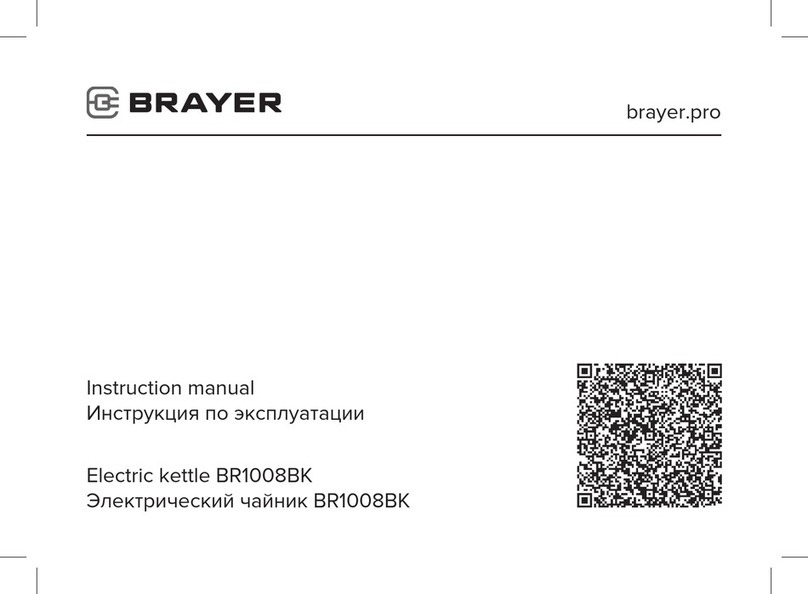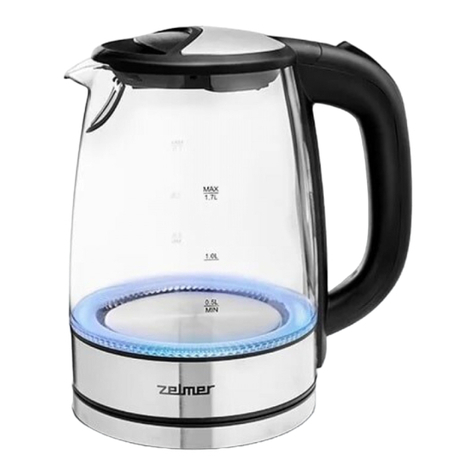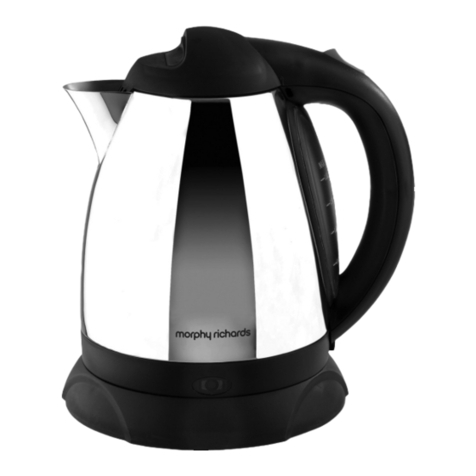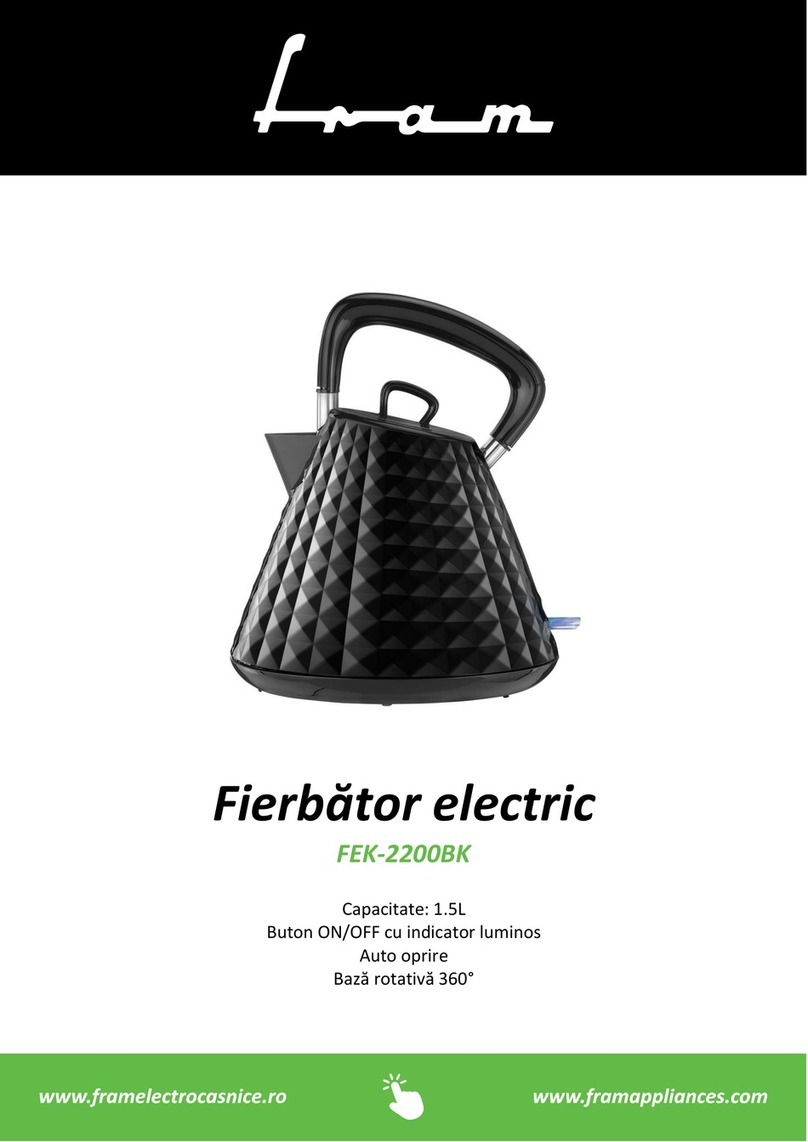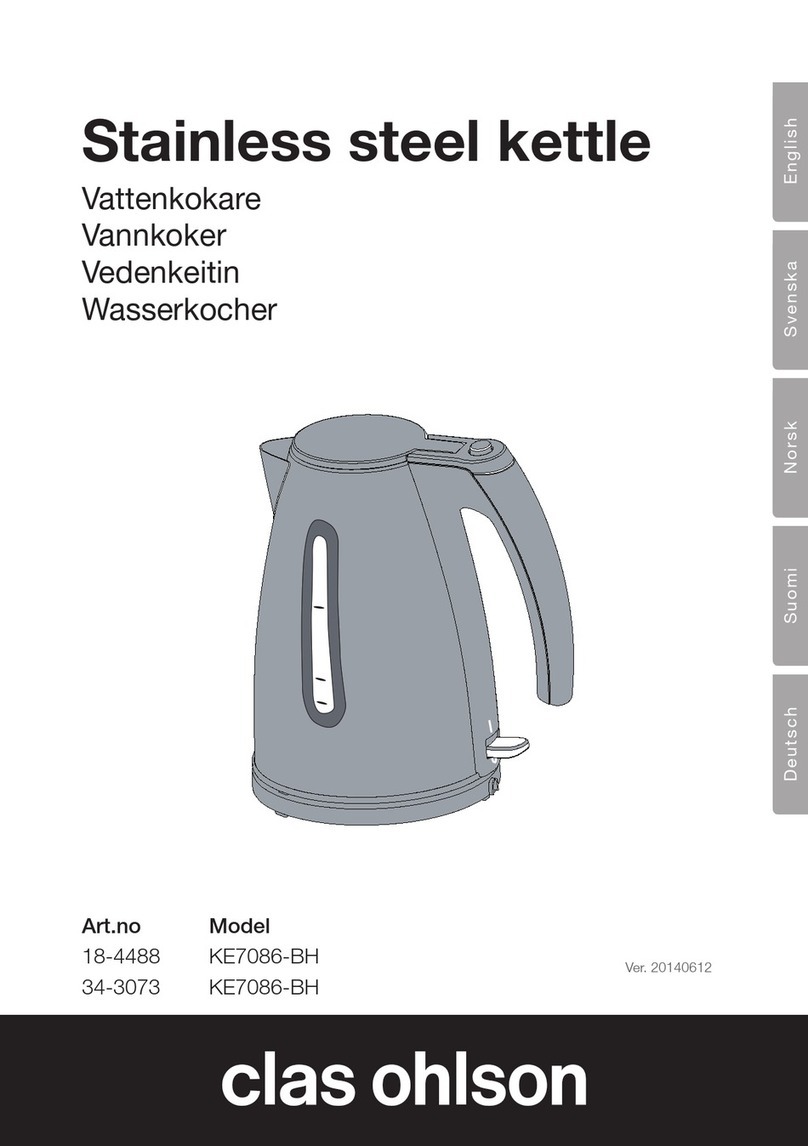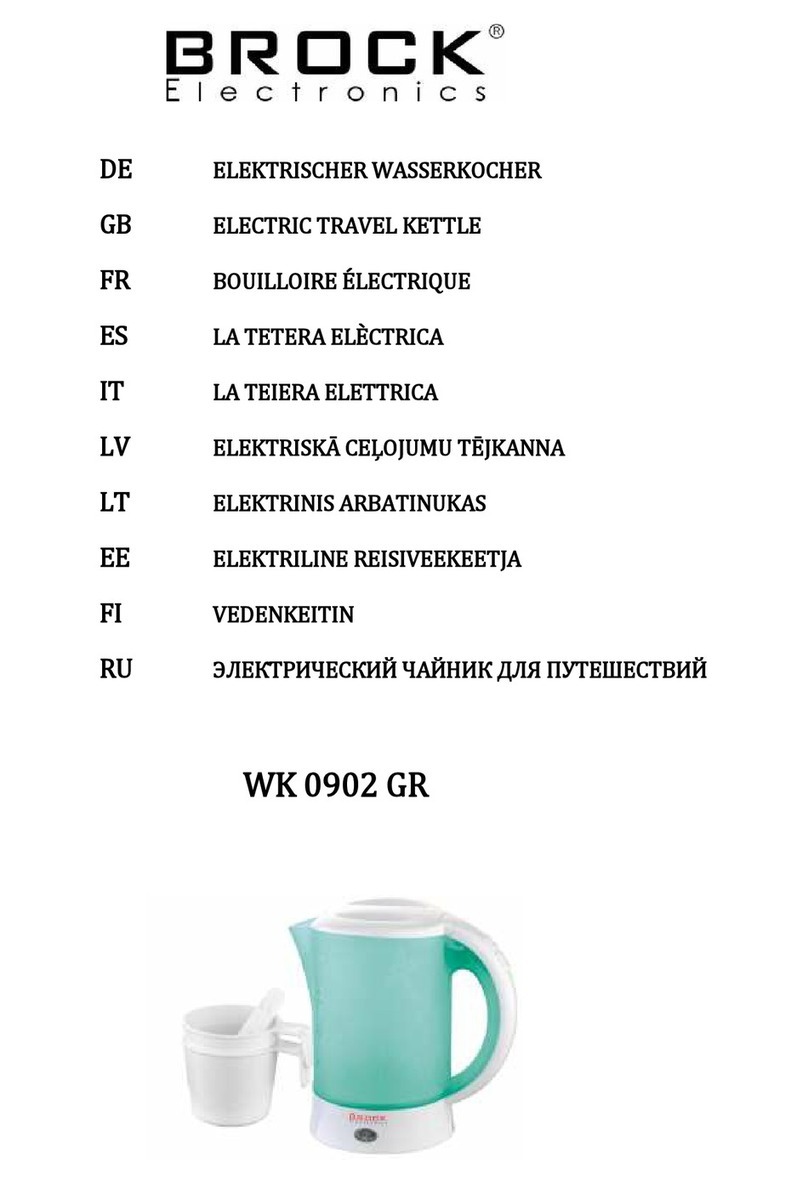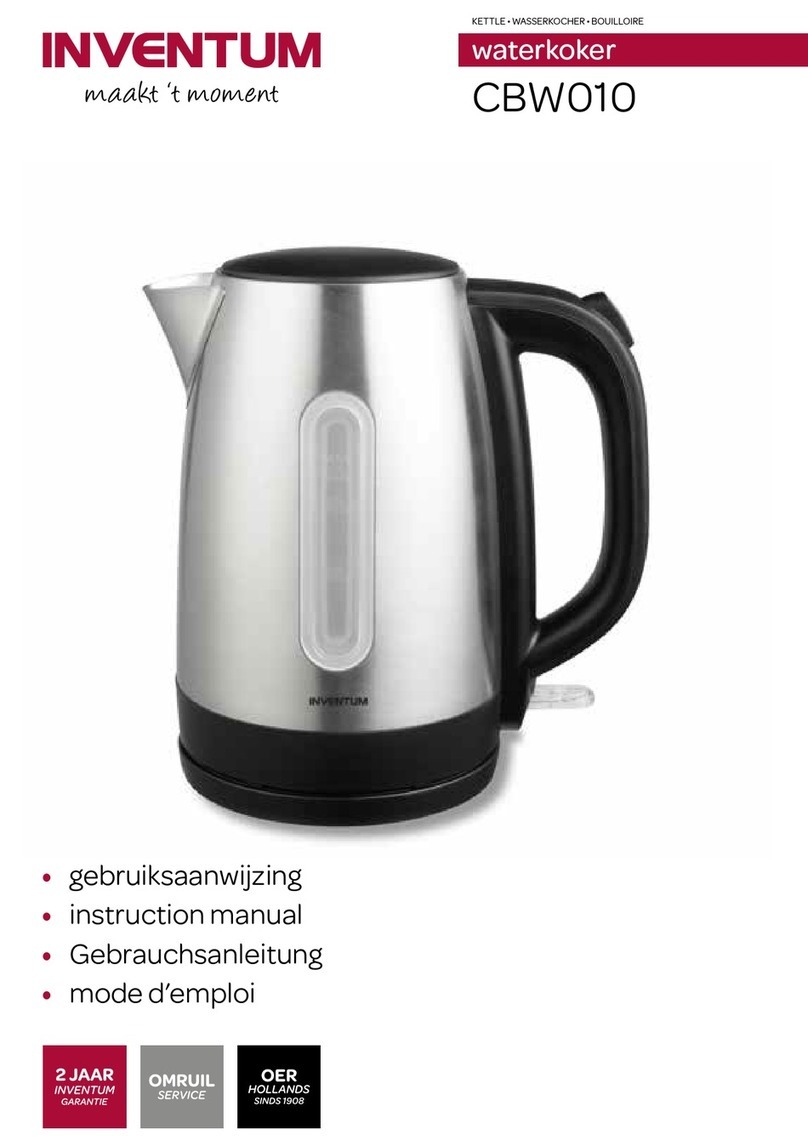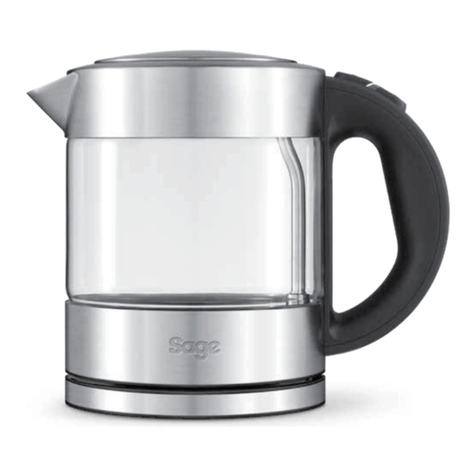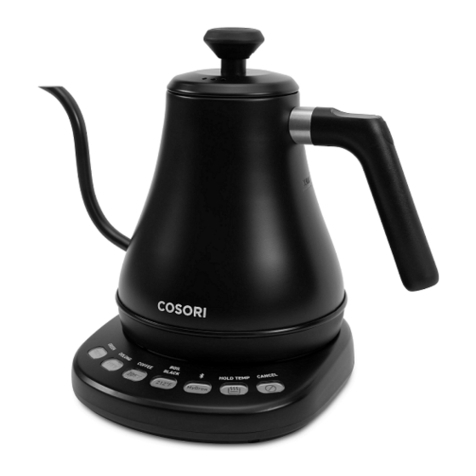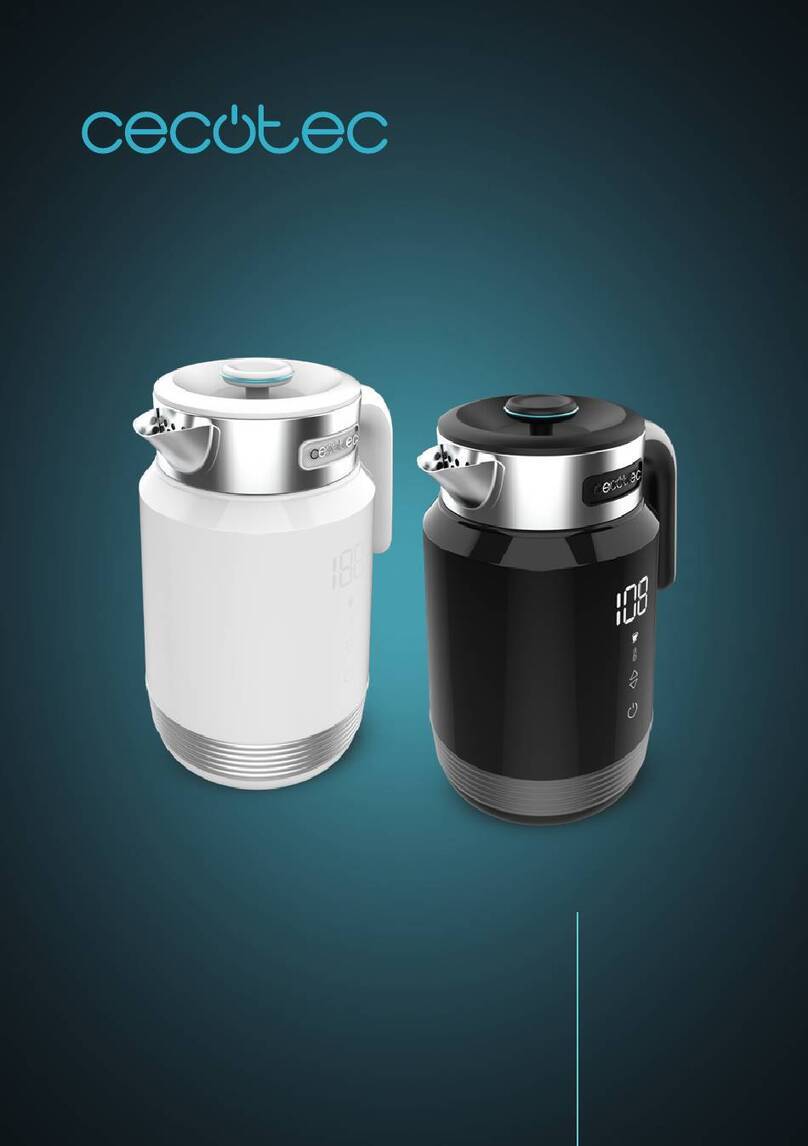
10 OM-DEE/4
Operation
the temperature knob and display. Once the desired temperature
is reached, the user may either press the MANUAL button again or
wait 5 seconds and the set temperature will be accepted by the
controller and locked in. After the set temperature is accepted, it
may be changed at any time by pressing the MANUAL button and
resetting the temperature using the same process above.
h. HIGH TEMP button – Used to set operating temperature of the
kettle at a preset high intensity (default = 7). Can be pressed
at any time during operation of the unit to change the set
temperature to the preset value except when there is an active
TIMER enabled.
i. TIMER button - once the appropriate set temperature is selected
using the HIGH TEMP, MANUAL or LOW TEMP buttons; a
countdown timer can be set to remind the user when the cooking
process is completed.
1. Range – 1 minute to 10 hours
2. When the timer expires:
a. the set temperature will automatically change to the
LOW TEMP setting and will continue at this setting
until the user changes the temperature via MANUAL
or HIGH TEMP buttons
b. An audible alarm will notify the user that attention is
required, the alarm will continue to sound until the
user presses the TIMER button.
3. An active timer can be cancelled by pressing and holding
the TIMER button for 5 secs
4. Set temp can be changed during an active timer by
pressing the MANUAL button and adjusting the set temp
using the Temperature knob and display.
5. HIGH TEMP and LOW TEMP presets cannot be used to
change the setpoint once a TIMER has started.
j. READY alarm – The control will sound 3 beeps when the unit has
reached within 20 degrees of set point during pre-heat and when
a higher set temperature is selected.
k. Crank tilt - a handle controls the worm and gear mechanism that
smoothly tilts the kettle body and holds it in the desired position.
B. To Start Kettle
1. To Start kettle with Classic controls
a. EVERY DAY make sure the jacket water level is above the mid-
point of the round sight glass. If the level is too low, see “Jacket
Filling” and “Water Treatment” on page 16 of this manual.
b. Check the pressure gauge. If the gauge does not show 20-30
inches of vacuum (that is, a reading of 20 to 30 below 0), see
“Jacket Filling” and “Water Treatment” on page 16 of this manual.
c. Turn on the electrical power to the unit.
d. Turn on the main power switch on the control face.
WARNING
AVOID ALL DIRECT CONTACT WITH HOT
SURFACES. DIRECT SKIN CONTACT COULD
RESULT IN SEVERE BURNS.
AVOID ALL DIRECT CONTACT WITH HOT
FOOD OR WATER IN THE KETTLE. DIRECT
CONTACT COULD RESULT IN SEVERE
BURNS.
TAKE SPECIAL CARE TO AVOID CONTACT
WITH HOT KETTLE BODY OR HOT
PRODUCT, WHEN ADDING INGREDIENTS,
STIRRING OR TRANSFERRING PRODUCT
TO ANOTHER CONTAINER.
CAUTION
DO NOT TILT KETTLE WITH LIFT-OFF
COVER IN PLACE. COVER MAY SLIDE OFF,
CAUSING INJURY TO OPERATOR.
CAUTION
KEEP FLOORS IN FRONT OF THE KETTLE
WORK AREA CLEAN AND DRY. IF SPILLS
OCCUR, CLEAN AT ONCE TO AVOID
SLIPS OR FALLS.
CAUTION
DO NOT OVERFILL THE KETTLE WHEN
COOKING, HOLDING OR CLEANING.
KEEP LIQUIDS AT LEAST 2-3” (5-8 cm)
BELOW THE KETTLE BODY RIM TO
ALLOW CLEARANCE FOR STIRRING,
BOILING PRODUCT AND SAFE TRANSFER.
